If you have visited Japan, you have probably used waribashi: disposable chopsticks at places like restaurants, cafes and convenience stores. The culture of using chopsticks exists in many parts of Asia, but Japan has a unique chopstick culture, including the use of disposable chopsticks, or waribashi. Today, I’d like to talk specifically about waribashi.
History of waribashi
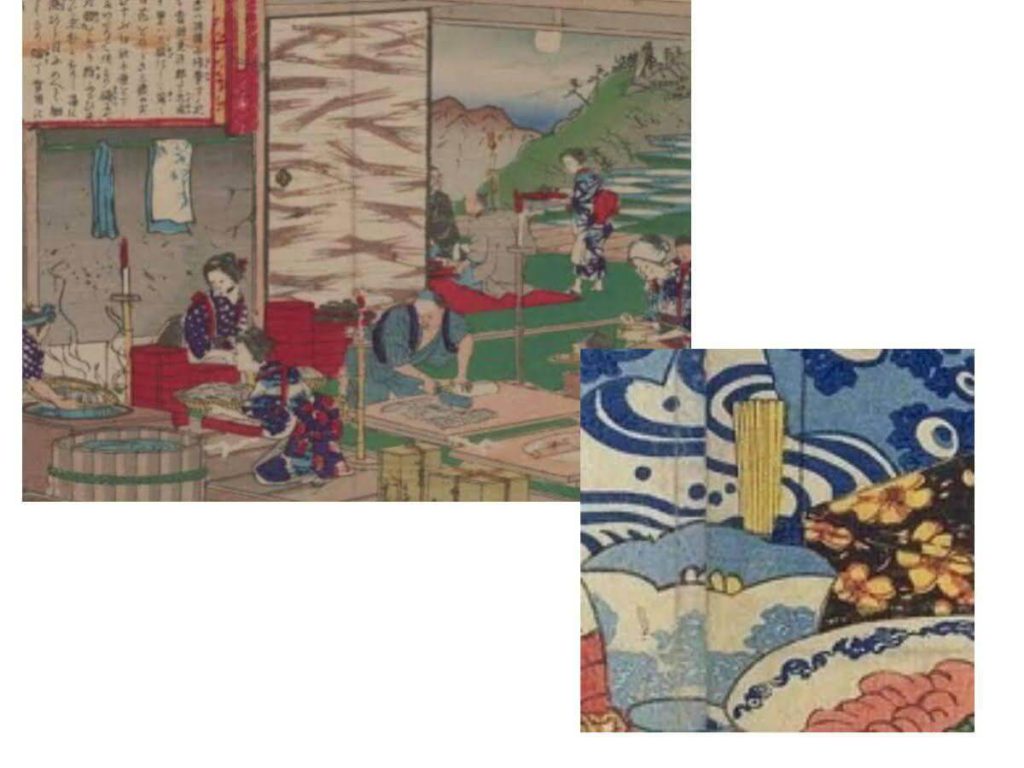
The term “waribashi” (割り箸) is believed to originate from the method of making them by splitting wood with a hatchet.
The exact origins of waribashi are unclear, but they have been used in Japan for centuries. As the legend goes, their history dates back to the late 13th century (early Muromachi period) during the Nanboku-cho period. It is said that Emperor Godaigo, who visited Yoshino in Nara, which is famous for its Yoshino-sugi (cedar trees) was presented with chopsticks made from Yoshino cedar wood.
The emperor was so pleased with these cedar chopsticks that he continued to use them. As a result, waribashi came to be regarded as luxurious items, initially reserved for the imperial court and people of high status.
In the Edo period, hikisaki-bashi chopsticks, with their base connected, were introduced. They are similar to waribashi used today, and this design made it instantly recognizable that the waribashi were unused, as they remained unseparated. In the late Edo period, when stalls such as eel restaurants serving eel bowls became popular, waribashi came into use there, and the use of waribashi among the common people generally spread.
Types of waribashi
Here are the 5 types of waribashi.
☆Genroku-bashi 元禄箸
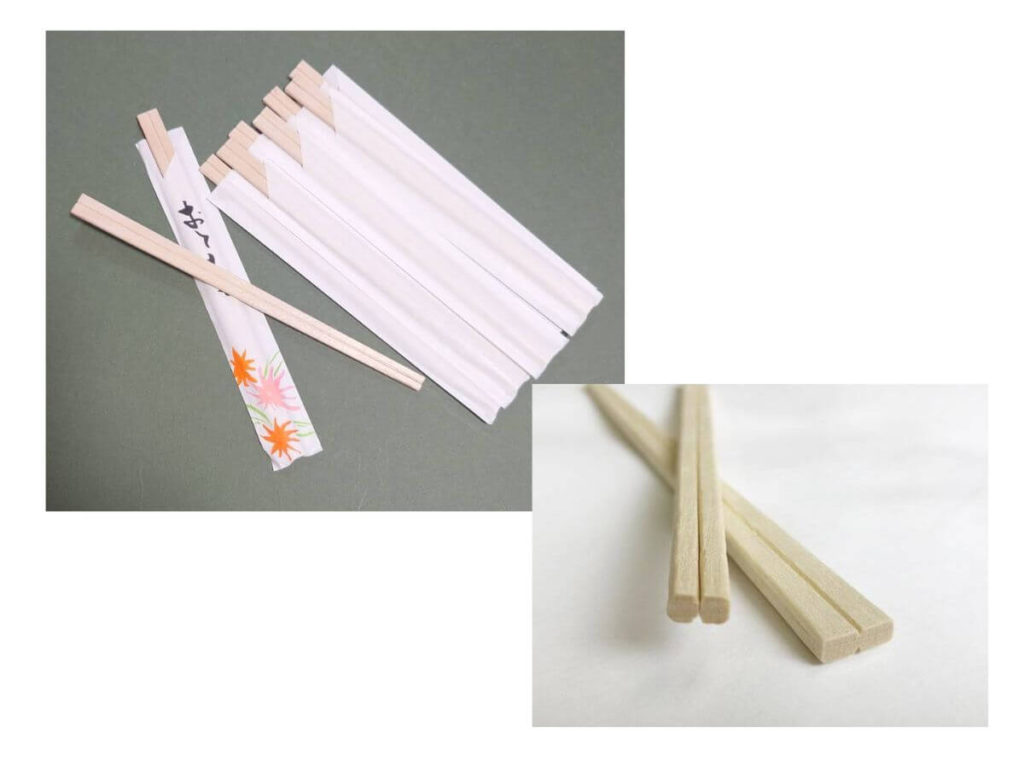
Genroku-bashi are the most commonly used in Japan. The name comes from the Genroku era. The four corners (we call them men めん) are trimmed, and grooves are added to the split part. As a result, the cross-section of the tip of the chopsticks is octagonal.
☆Tensoge-bashi 天削箸
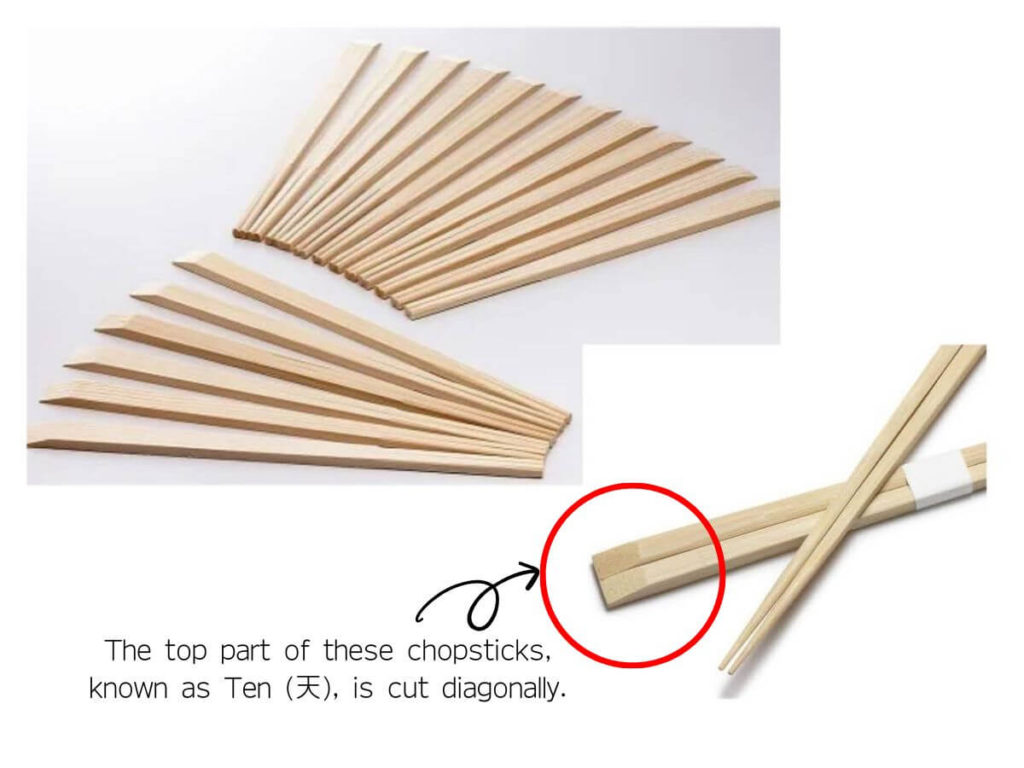
It is a special type of chopstick where the top corners are shaved diagonally. This angled design highlights the wood grain, making them very popular as chopsticks for hospitality.
☆Rikyu-bashi 利休箸
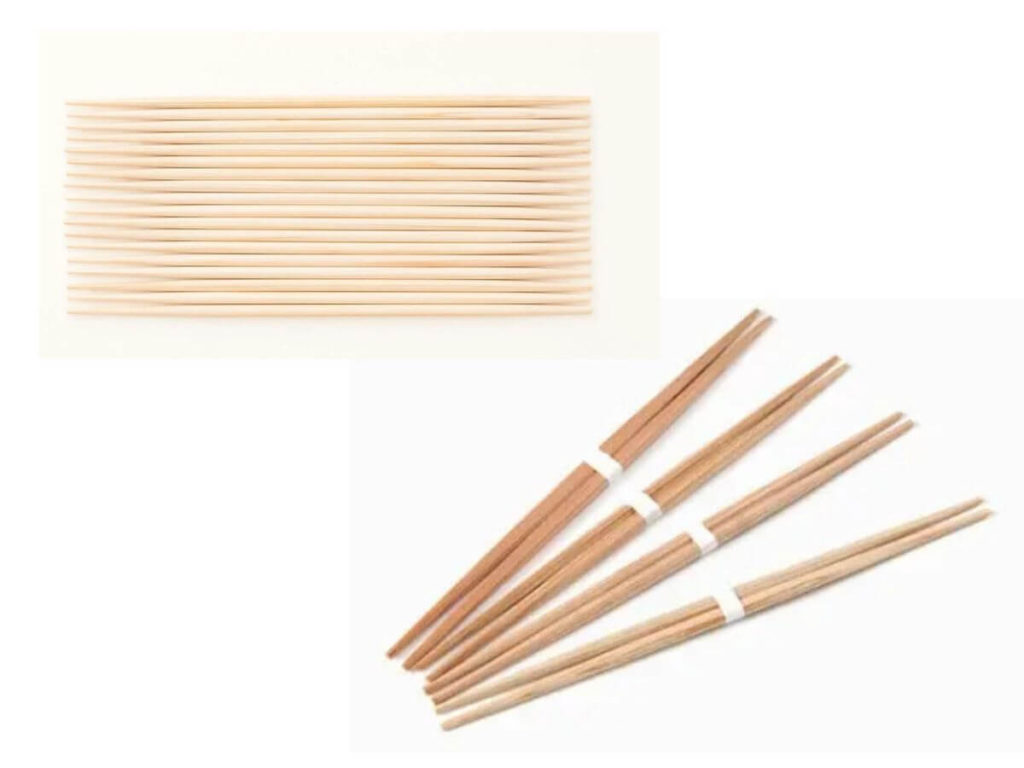
These chopsticks, which were famously used by the tea master Sen no Rikyū during the Muromachi period to entertain guests at tea ceremonies, have a distinguished design with both ends being thin and the center being thicker. The two chopsticks are joined together, symbolizing a harmonious couple, and they were also referred to as “Fūfu Rikyū” (夫婦利久), meaning “a married couple.”
☆Iwai-bashi 祝箸
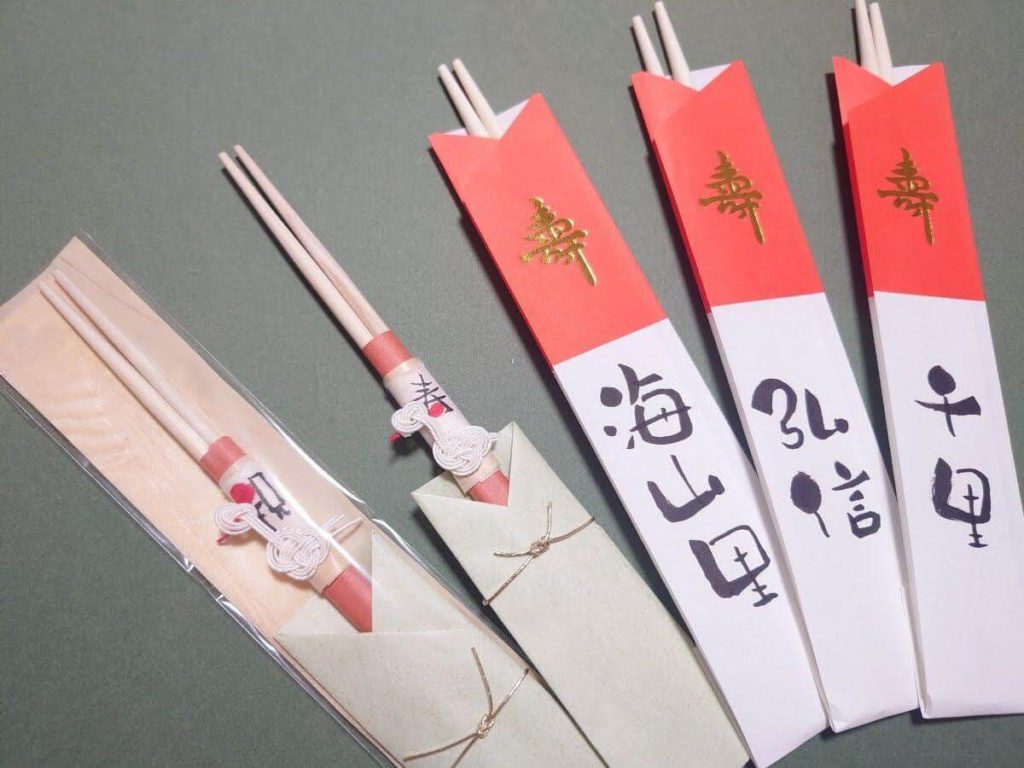
Celebration chopsticks, also known as “Ryōguchi-bashi” due to their distinctive shape, have thin ends and a thicker middle. The cross-section is round, symbolizing a rice bale, which is considered auspicious. These chopsticks carry the meaning of “Shinjin Kyōshoku” (神人共食), representing the idea that one end is used by the gods and the other by humans, symbolizing the connection between the divine and the human in shared meals.
These celebration chopsticks are especially used during New Year’s celebrations, with each chopstick wrapper bearing the name of a family member.
Willow wood is considered auspicious because it begins to sprout with the arrival of spring winds after Risshun (the start of spring). Additionally, breaking chopsticks at a celebratory event is seen as bad luck, but willow wood, known for its flexibility and moisture content, is durable and resistant to breaking, making it ideal for chopsticks. Willow is also believed to ward off evil spirits, further making it a fitting material for celebrations. Moreover, the name “yanagi” (willow) is associated with good fortune due to the wordplay on “家内喜” (yanagi), meaning “family joy.”
☆Take-waribashi 竹割箸
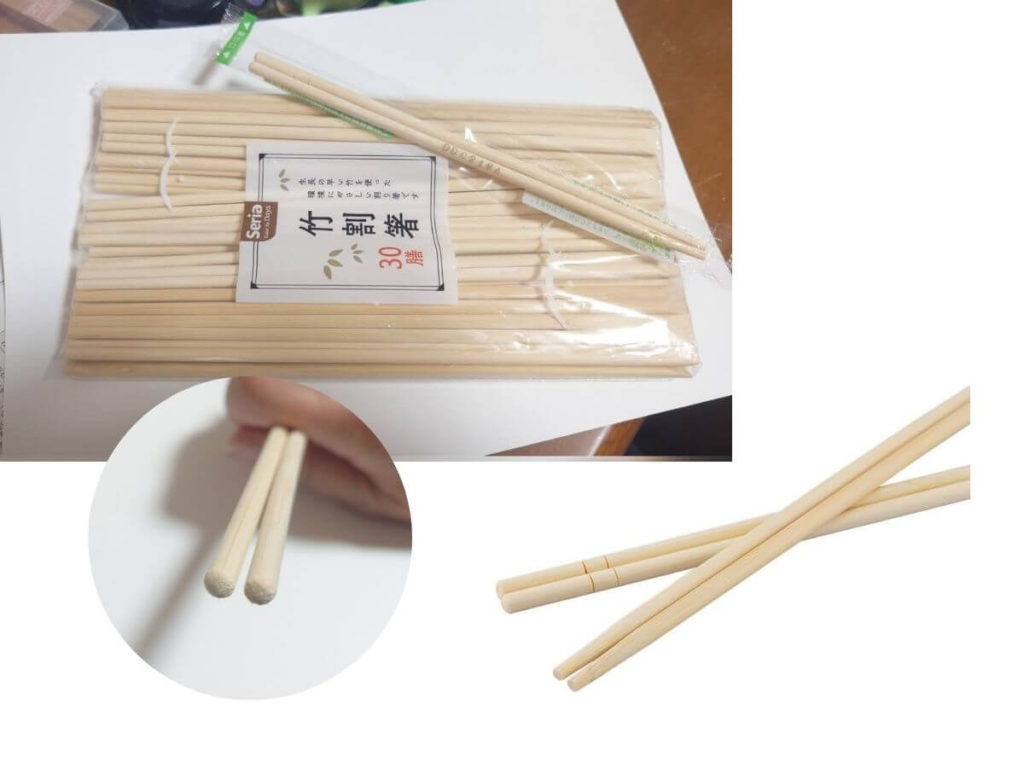
Bamboo chopsticks are known for their flexibility, strength, and resistance to breaking. Even when the tips are processed to be thin, they remain durable, while the handle retains its strength.
Bamboo disposable chopsticks are widely used in restaurants because bamboo grows quickly, making it a highly sustainable material. However, bamboo is prone to mold, so sterilization and thorough drying are essential. Imported bamboo chopsticks may contain anti-mold agents or bleaching agents, but they are inspected by the government to ensure safety.
Manners
One aspect that we Japanese often don’t pay much attention to is the etiquette of using disposable chopsticks. The proper etiquette is as follows:
- Hold the chopsticks in front of your chest or on your lap.
- Place the tips of the chopsticks on the left side.
- Break the chopsticks by pulling them apart in an upward motion.
It is considered bad manners to break disposable chopsticks vertically or pull them apart sideways. This motion can cause your hands to spread wide, potentially bumping into the person next to you or knocking over glasses or dishes, which could spill the food. After finishing your meal, place the used chopsticks in the wrapper with the dirty tips hidden, and fold the wrapper about one-third of the way from the bottom. Folding the wrapper makes it easier to distinguish the used chopsticks from a new pair. This is considered a smart and graceful way to handle chopsticks.
Japanese Chopstick Culture
As for food culture, there are three primary methods of eating: using your hands, using cutlery such as forks and spoons, and using chopsticks. While chopsticks are common in many Asian countries, including China, Korea, and Vietnam, Japan has developed its own unique style. In other countries, chopsticks are often used alongside spoons or ladles, such as the Chinese soup spoon. However, in Japan, meals are eaten exclusively with chopsticks, and it is uniquely Japanese to hold bowls or other serving dishes while eating soups or other dishes.
Another distinctive aspect of Japanese chopstick culture is the custom of each family member having their own personal pair of chopsticks. In other countries, this level of individualization does not seem to exist.
As for disposable chopsticks (waribashi), they have sometimes been criticized for their environmental impact. However, these chopsticks have traditionally been made from wood offcuts, which makes them surprisingly eco-friendly.
Other Ways to Use Waribashi
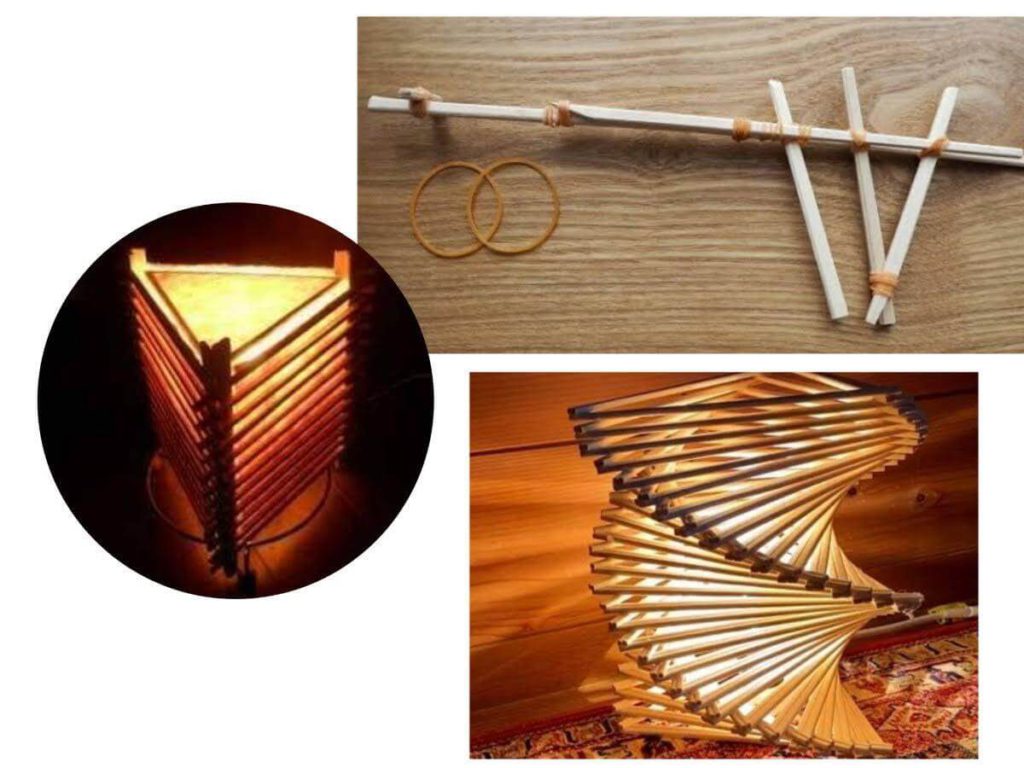
Waribashi are made of wood, so they can also be great materials for crafting. When I was a child, I made a toy gun out of them as part of a craft homework project with my great-grandfather, who knew exactly how to make it. My father uses waribashi as support sticks for small sprouts on his farm. While they aren’t new, he washes them before reusing them.
Some craftsmen even make lampshades out of waribashi. These lampshades create a warm and gentle light, enhanced by the natural warmth of the wood.
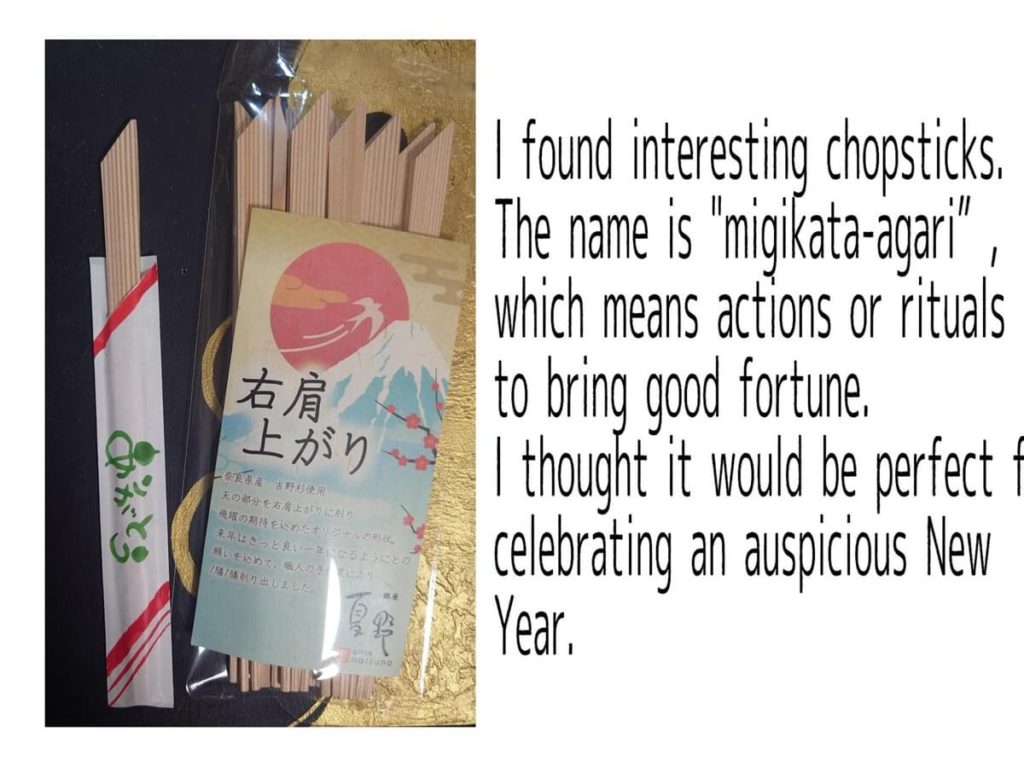
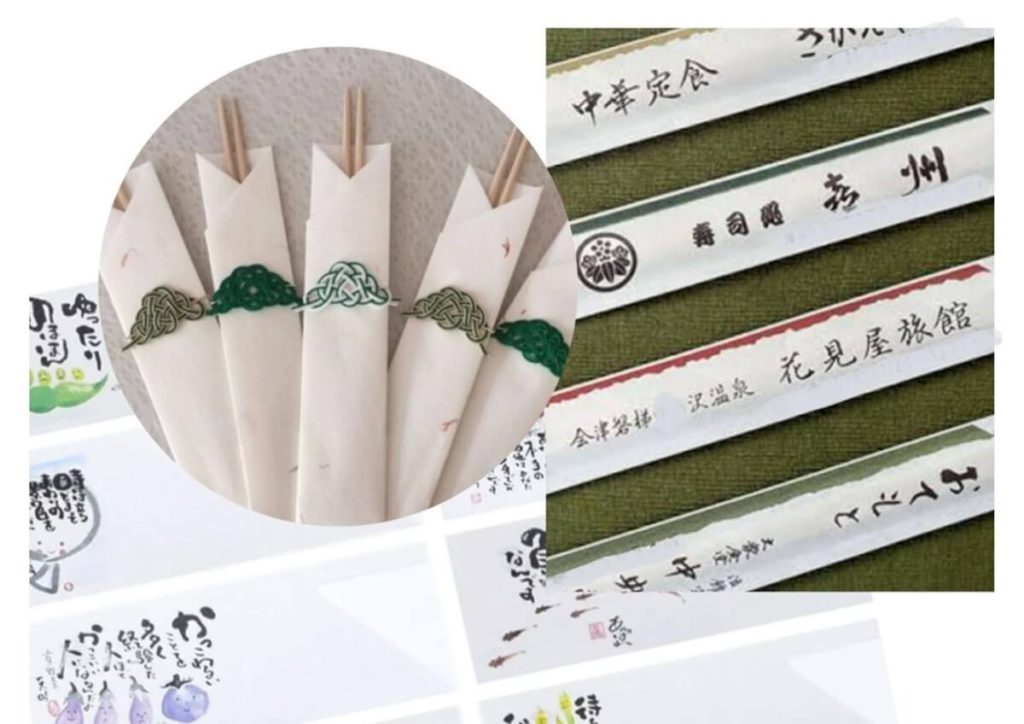
And with that, my story about waribashi comes to an end.
Waribashi are often seen as inexpensive and disposable, but in Japan, they’ve been transformed into charming and special chopsticks with just a little extra effort—especially for guests. This also extends to the beautifully designed chopstick sleeves, which can be unique and delightful, reflecting the hospitality of the region or serving as advertisements for restaurants and cafes. Collecting these sleeves as mementos of your journey can be a wonderful way to cherish your travels.
When you visit Japan, be sure to enjoy the variety of waribashi and chopstick sleeves you’ll encounter everywhere!
Thank you.
I’m a clay artist, and a master of Japanese calligraphy “Onore-sho”. I have my own shop in Ikaruga town, Nara, which is near Horyuji temple: world heritage site. And I’m a volunteer English tour guide. I enjoy learning English everyday.

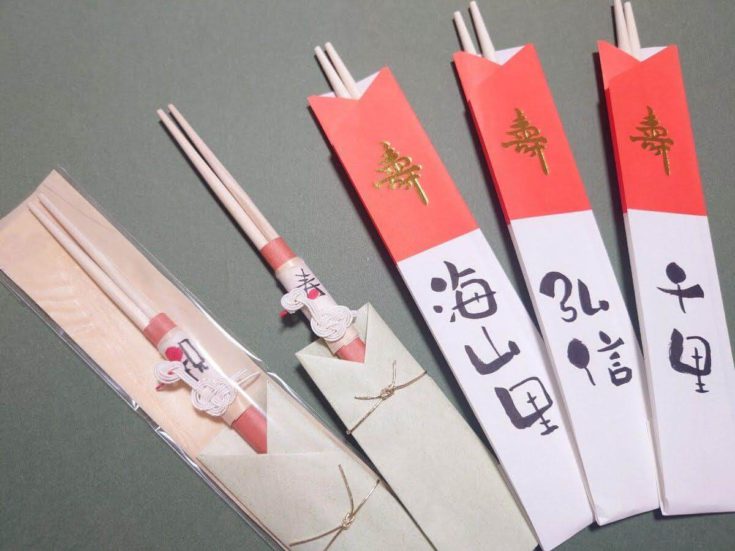
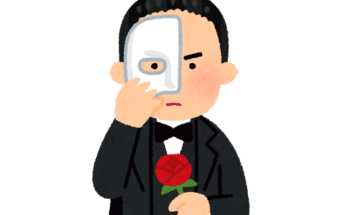
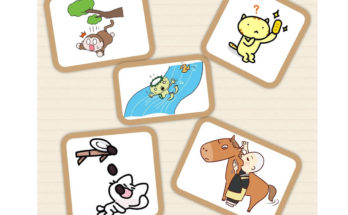

 HTJ has a YouTube page! Check it out
HTJ has a YouTube page! Check it out
Hi Chisato,
Wow, I never imagined there were so many kinds of waribashi. I use take waribashi every day and now have an increased appreciation for them because of your article. Thank you!